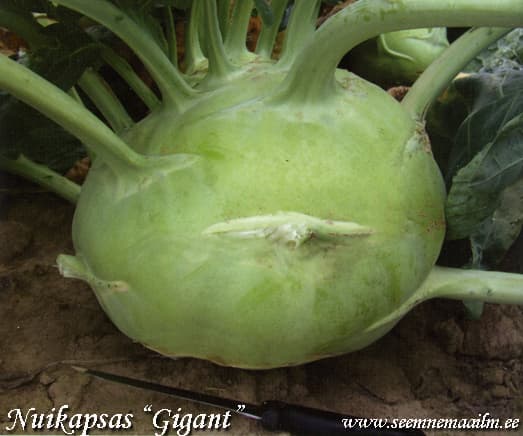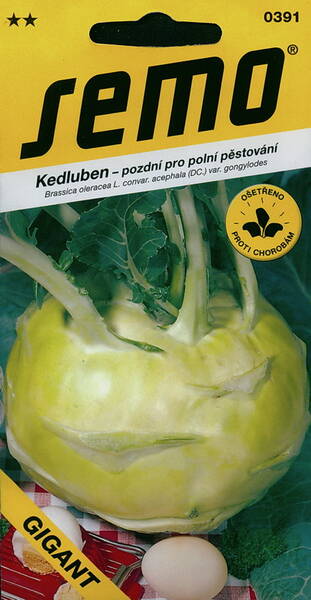Your shopping cart is empty!
Kohlrabi "Gigant"
Brassica oleracea L. convar. gongylodes L.
1.42€
Ex Tax: 1.14€
Ex Tax: 1.14€
Kohlrabi "GIANT".
Stable yield and good shelf life. Champion among cabbages in terms of nutritional content.
Late ripening variety. The period from planting seedlings to ripening is 70-75 days (from germination to harvesting 130-150 days).
The stem fruits are round, 15-20 cm in diameter, the apex is concave, the color of the peel is whitish-green. The pulp is white, tasty, tender. The weight of the stem fruit is 1.5-2.0 kg.
Recommended for fresh use, processing and winter storage.
Sowing time: April.
Planting seedlings: May.
Harvest: June, July.
Planting methods: open ground, seedlings.
Distance between plants: 15 cm.
Distance between rows: 30 cm.
Number of seeds in 1,0 g = 210-280.
* Kohlrabi requires well-cultivated, deep, fertile soils and regular watering, especially in hot weather while the heads are growing. Even thought most of our varieties are highly resistant to stem splitting, by regular watering and pest management this problem can be virtually eliminated. Small farmers are recommended to cover plants with a non-woven textiles. Most of the early varieties are grown as seedlings in trays or containers, later on in greenhouses or in the field. Late varieties like TROJA F1 and GIGANT can be sown directly in the field.
Stable yield and good shelf life. Champion among cabbages in terms of nutritional content.
Late ripening variety. The period from planting seedlings to ripening is 70-75 days (from germination to harvesting 130-150 days).
The stem fruits are round, 15-20 cm in diameter, the apex is concave, the color of the peel is whitish-green. The pulp is white, tasty, tender. The weight of the stem fruit is 1.5-2.0 kg.
Recommended for fresh use, processing and winter storage.
Sowing time: April.
Planting seedlings: May.
Harvest: June, July.
Planting methods: open ground, seedlings.
Distance between plants: 15 cm.
Distance between rows: 30 cm.
Number of seeds in 1,0 g = 210-280.
* Kohlrabi requires well-cultivated, deep, fertile soils and regular watering, especially in hot weather while the heads are growing. Even thought most of our varieties are highly resistant to stem splitting, by regular watering and pest management this problem can be virtually eliminated. Small farmers are recommended to cover plants with a non-woven textiles. Most of the early varieties are grown as seedlings in trays or containers, later on in greenhouses or in the field. Late varieties like TROJA F1 and GIGANT can be sown directly in the field.

Eng.: Kohlrabi. Suom.: Kyssäkaali. Sven.: Kålrabbi. Bot.: Brassica oleracea L. convar. gongylodes L.












